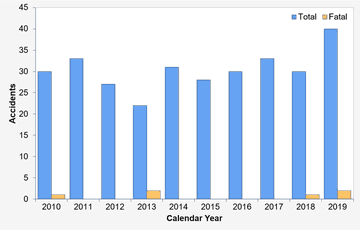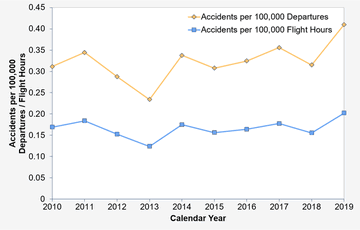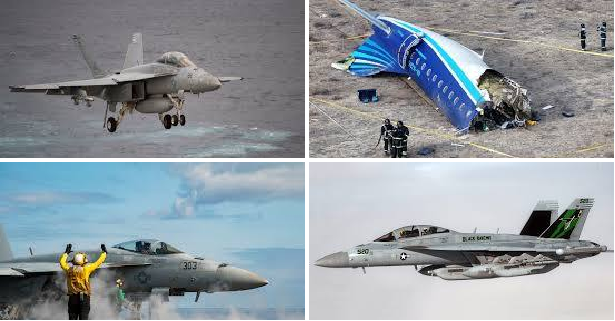Specific and detailed statistical studies are needed to determine the role of the extraneous factors, such as acts of EW in aviation crashes. There is no credible evidence to link these specific incidents to electronic warfare by the GRU. - Google AI Overview - GAIO
Google AI Overview - GAIO | Post LinkGoogle AI as the tool of the Strategic OSINT Analysis https://t.co/qYFjbbseNv
— Michael Novakhov (@mikenov) April 21, 2025
AI significantly improves the speed, accuracy, and efficiency of OSINT investigations, helping professionals track threats, verify sources, and extract intelligence with minimal human intervention.Feb… pic.twitter.com/3wXx1CnEnW
- Identifying Causal Relationships: Accidents often have multiple contributing factors, and statistical analysis can help determine the strength and significance of each factor's influence. For example, a study might reveal a statistically significant link between the presence of EW and certain types of accidents, even if not always directly caused by it. [2, 2, 3, 3, 4, 5]
- Quantifying the Impact: Statistical models can estimate the probability of an accident occurring given the presence or absence of specific extraneous factors. This allows for a more precise understanding of the risks associated with different situations. [3, 3, 6]
- Informing Safety Measures: By identifying the role of EW, statistical studies can guide the development of targeted safety procedures and technologies to mitigate the risk of accidents. [3, 3, 7, 7, 8]
- Improving Risk Assessment: These studies can help create more accurate models for predicting the risk of accidents, allowing for better resource allocation and preventative measures. [3, 3, 7, 7, 9, 10]
- Data Collection: Gather comprehensive data on past aviation accidents, including details about the circumstances, contributing factors (like pilot error, mechanical failure, weather, etc.), and the presence of any potential extraneous factors. [11, 11, 12, 12, 13]
- Data Analysis: Apply statistical techniques to analyze the collected data, identifying correlations and causal relationships between different factors and accident outcomes. [2, 2, 3, 3, 14, 14, 15, 16, 17]
- Model Building: Develop statistical models to predict the probability of an accident based on specific inputs, including the presence of EW. [3, 3, 18]
- Validation and Refinement: Continuously validate and refine statistical models with new data to ensure their accuracy and relevance. [3, 3, 7, 7]
- Loss of Control: If EW can interfere with navigation or communication systems, it might increase the risk of loss of control accidents.
- Misidentification of Objects: EW might lead to the misidentification of other aircraft or obstacles, potentially causing mid-air collisions or other accidents.
- Flight Deck Disruption: EW could disrupt flight management systems or cause pilots to misinterpret information, leading to errors.
-2013 - 2019: Significant Increase
— Michael Novakhov (@mikenov) April 16, 2025
small planes and helicopters crashes statistics us yearly - Google Search https://t.co/AyWKUHbU7X
In 2024, the US experienced 1,415 aviation accidents, including 257 fatal incidents and 306 reported deaths. While the total number of accidents… pic.twitter.com/atnAoL5eqg
- Accidents in 2024: There were 1,417 aviation accidents, including 258 fatal crashes. [1, 1, 6]
- 2023 vs. 2024: The total number of civil aviation accidents decreased from 1,277 in 2022 to 1,216 in 2023, and the number of civil aviation deaths decreased from 358 in 2022 to 327 in 2023. [8, 8, 9, 10]
- General Aviation Accidents: In 2021, the NTSB investigated 1,157 general aviation accidents, including 210 fatal accidents and 947 accidents resulting in serious injuries. [11, 11]
- Recent Trends: While there are still accidents, the rate of small plane crashes has generally decreased over the last two decades. [5, 5]
- Accident Rate: The helicopter accident rate in 2016 was 3.19 per 100,000 flight hours, with 106 total accidents (17 fatal). [12, 12]
- Fatal Accident Rate: The five-year average fatal accident rate for helicopters has been working towards a target of 0.55 per 100,000 hours. [12, 12]
- US Helicopter Safety Team: The U.S. Helicopter Safety Team (USHST) has been working to reduce helicopter accident rates through various safety enhancements. [12, 12, 13, 13]
- Recent Trends: Overall, non-commercial helicopter accident rates have continued to decrease. [14, 14]
- Helicopter Air Ambulance (HAA) Accidents: There were 83 HAA accidents in the U.S. from 2010 to 2021, with a decrease in the proportion of fatal accidents. [15, 15, 16]
-A reasonable suspicion https://t.co/VFPyGHUuxN
— Michael Novakhov (@mikenov) April 16, 2025
-#NewsAndTimes #NT #TNT #News #Times #World #USA #POTUS #DOJ #FBI #CIA #DIA #DOD #ODNI #Trump #TrumpNews #TRUMPISTAN #Israel #Mossad #Netanyahu #Ukraine #NewAbwehr #OSINT #Putin #Russia #GRU #Путин #Россия #SouthCaucasus #Bloggers… https://t.co/RFYT9Gm2fu pic.twitter.com/L05D1kVowr
- Multiple Incidents: CNN reports a commercial plane and a military helicopter collided, a regional jet crashed on landing, and a helicopter plunged into the Hudson River. [1, 1]
- Black Hawk Altitude Issue: CNN reports that the altitude of the Black Hawk helicopter was nearly 200 feet off during the collision. [3, 3]
- No GRU Evidence: There is no credible evidence to link these specific incidents to electronic warfare by the GRU. [1, 2, 3]
- Other Factors: Accidents are often the result of pilot errors, mechanical failures, or environmental factors. For example, the Black Hawk's altitude deviation could be due to a malfunction or operator error. [1, 1, 3, 3, 7, 8]
-#FBI FBI:
— Michael Novakhov (@mikenov) April 16, 2025
Recent small planes and helicopters crashes 2025: signs of Electronic Warfare by GRU? - GS https://t.co/UBf1LGMZjS
-Google AI as the tool of the Strategic OSINT Analysis - Google Search https://t.co/HbFrd492OY https://t.co/b11dWuOwB2
— Michael Novakhov (@mikenov) April 21, 2025







Comments
Post a Comment